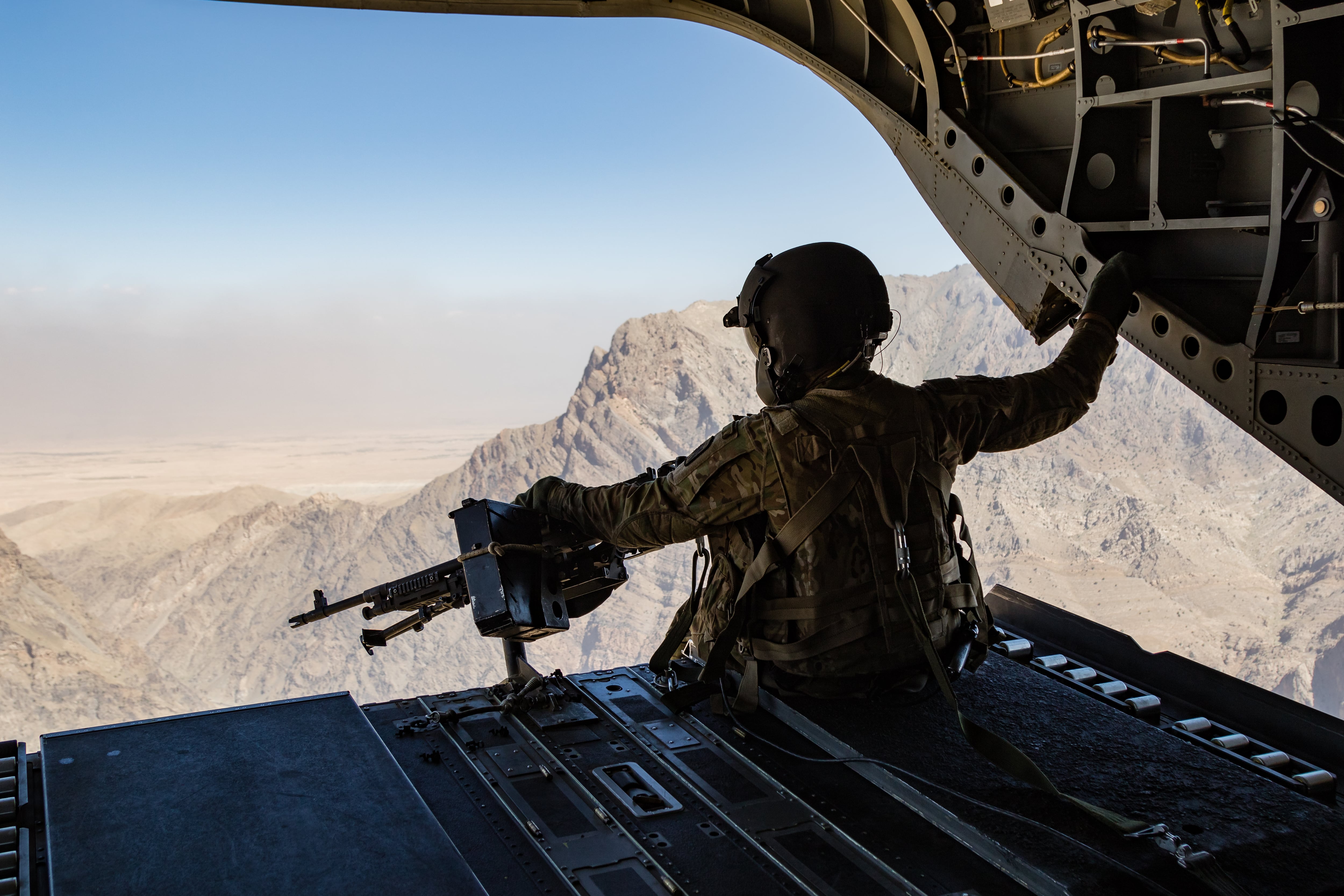An Army specialist received the Purple Heart and an Air Medal with valor after his CH-47 Chinook was hit by a rocket-propelled grenade on June 12, 2019, in Afghanistan’s northern Kunduz province, Fort Bliss officials confirmed.
The soldier did not wish to conduct an interview regarding the incident, and his unit, the 1st Armored Division Combat Aviation Brigade, declined to provide a redacted copy of his award citation.
The Chinook was performing “a routine mission” when it was struck by the RPG, a U.S. Forces-Afghanistan spokesman said, adding that “the aircraft was able to safely land at a nearby installation.”
The command declined to provide the number of RPG strikes on helicopters that occurred in 2019. And beyond saying that the aircraft was hit by an RPG, the spokesman would not comment on the type of munitions or whether there have been any recent changes to the aviation threat environment.
“Strikes aren’t common,” the spokesman said. “Due to operational security, I can’t provide specifics.”
The 1st Armored Division aviators in Afghanistan were replaced by those from the 10th Mountain Division this winter. The attack on the Chinook came less than a month after another Ch-47 helicopter crashed in Helmand province.
That Chinook was forced to perform a hard landing due to a mechanical failure. The impact wounded U.S. and Afghan personnel, but there was no hostile fire or enemy contact involved, U.S. officials said at the time. The aircraft was later destroyed on the ground.
Taliban fighters regularly claim responsibility for shooting down aircraft that the U.S. military says are actually accidents and mishaps.
One such incident occurred this November in eastern Logar province when a Taliban spokesperson claimed responsibility for a downing that killed two Army aviators who were providing security for troops on the ground. U.S. officials said in the wake of the incident that preliminary reports ruled out enemy fire as the cause of the crash.
Although there has been some fear of guided shoulder-fired air-defense systems, known as MANPADS, leaking into Afghanistan, the weapons have never truly materialized beyond vague intelligence reports. Some of those reports suggested Iranian Quds Force leaders were interested in providing MANPADS to Taliban fighters, but actual materiel support of the systems was either too infrequent or the systems were in such disrepair that the threat was minimal.
When shootdowns of helicopters have occurred in the country, it’s the typically result of RPGs.
RPGs are unguided and rely on a hefty dose of luck to connect with airborne targets. One of the most difficult elements is properly leading target aircraft, which regularly travel at speeds about two to three times that of a ground vehicle. However, the aircraft becomes much more vulnerable during insertions, when troops are disembarking or rappelling, and extractions.
One of the most infamous uses of the weapon against helicopters occurred Aug. 6, 2011, when militants shot down a CH-47 ferrying 38 people in Wardak province, including members of SEAL Team 6.
Taliban fighters shot a volley of RPGs at the helicopter as it neared its landing zone under the cover of darkness, according to archived memos following the investigation. The detonation of one of the RPG rounds severed part of the aft rotor blade, causing the aircraft to spin violently, separate in the air and crash in a creek bed, killing all on board.
Kyle Rempfer was an editor and reporter who has covered combat operations, criminal cases, foreign military assistance and training accidents. Before entering journalism, Kyle served in U.S. Air Force Special Tactics and deployed in 2014 to Paktika Province, Afghanistan, and Baghdad, Iraq.





